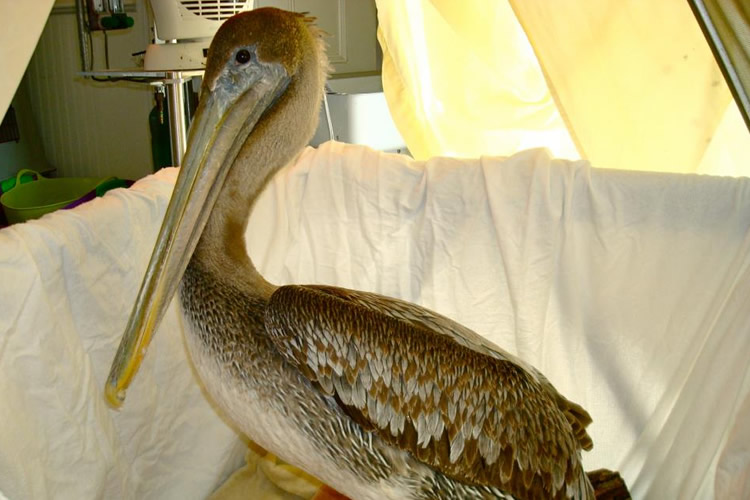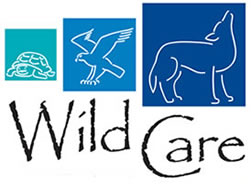
Birding: Pelican Briefing
From one massive storm to the next, the Cape and Islands during the past couple of weeks have been anything but dull for those of us interested in birds. The most recent storm, a fierce and powerful nor’easter, delivered much higher octane winds and rain than Sandy to the region and caused more damage. Large numbers of dovekies, fantastic small black and white seabirds, were seen from many Cape Cod Bay beaches during the blow.
Many other species were blown ashore. Once on land, these birds can’t move around to get airborne again. They must be on salt water to survive and be able to dive or fly. If you find one ashore, take it to a local wildlife rehabilitator like the Cape Wildlife Center on Route 6A in Cummaquid or Wild Care in Eastham just off the Orleans Rotary. As this column was going to press, I had already placed two dovekies back into the salt water, away from the prying eyes of gulls that would make short work of a less-than-alert dovekie.
The Cape and Islands were at the epicenter of North American birding this past week. Most exciting was the continued presence of two northern lapwings, large, colorful plovers from Europe and Asia, on Nantucket. These charismatic and extremely rare birds in North America were first found on Oct. 30.
Fortunately, these two birds were not one-day wonders and remained a fairly reliable sighting for a week for all who made the effort to get to Nantucket. They were seen by hundreds of observers from around the country. Sadly, it appears that during the clear cold evening of Nov. 5 and 6 that the birds took advantage of the conditions and perfect night sky and moved on to somewhere. On Election Day, Nov. 6, birders from Colorado, Oregon and New England scoured most of Nantucket with no joy, searching in vain for the wayward lapwings.
Where they went leads to endless speculation. Did they head south to overwinter on the Gulf Coast, or in the Caribbean or the north coast of South America? Perhaps they realized their error of heading a bit more than 3,000 miles west of their species’ normal range and will attempt a trans-Atlantic crossing from west to east. Or maybe they will just meander south, and when reaching the potato fields on the southern shore of eastern Long Island, decide to stay there or perhaps farther south in the Delmarva Peninsula. Should reports of two northern lapwings surface from elsewhere in the country, rest assured you will hear of it in a future column.
There was an unprecedented incursion of immature brown pelicans to the region beginning on the day after Superstorm Sandy passed.
The first report of one bird came in on Halloween, and then four more were reported after being spotted on Smith’s Point on Nantucket. All the birds were immature, and all were banded.
On Nov. 1, brown pelican sightings were reported from Nantucket, Provincetown, Harwich, Brewster and Mattapoisett. It was a large-scale incursion of storm displaced brown pelicans, well north of where these birds wanted to be.
Many of these young birds were not looking good and were emaciated, no doubt unable to find food during the hurricane. One bird was hanging out at the Nantucket dump on Nov. 3. It was easily captured and flown over to the Cape Wildlife Center in Barnstable, where it is doing well. This individual was banded on July 11, 2011, at Rhodes Point, Va.
An immature brown pelican was seen near Great Point on Nantucket on Nov. 4. It was seen diving and plunging amid feeding gulls and cormorants, and then swallow a pouch full of baitfish. It fished off and on for almost two hours. This individual was looking robust, and as of Sunday it was procuring food.
Maybe it will start making its way south, where brown pelicans belong. They are not equipped to deal with cold temperatures and must head there as soon as possible.
Several brown pelicans and at least one white pelican are still in the area and being reported almost daily.
Keep your eyes open and report any you see, as this species does well if brought to a rehab facility. Here’s hoping they won’t need our help but, if they do, it’s nice to know the resources are here and in place to aid these special birds.
Until next week — keep your eyes to the sky!
E. Vernon Laux’s birding column appears every Saturday in the Cape Cod Times. Laux is the resident naturalist for the Linda Loring Nature Foundation on Nantucket. You can listen to his “Bird News Commentaries” on Wednesdays at 8:35 a.m. and 5:45 p.m. and hear him on “The Point” with Mindy Todd at 9:30 a.m. the second Thursday of the month on the Cape’s NPR station, at 90.1, 91.1 or 94.3 FM. He can be reached at [email protected].
Wild Night Out Online Auction
READY, SET, BID… We are so excited to announce that our Wild Night Out Online Auction is now live!
READ ALL NEWS
CALENDAR OF EVENTS
04 April, 2024
Wild Night Out Online Auction
EVENT DETAILS
05 April, 2024
Wild Night Out
EVENT DETAILS
28 February, 2024
Wildlife Winter/Spring Talk Series
EVENT DETAILS

DID YOU KNOW??
Wild Care has a state-of-the-art seabird therapy pool, which allows seabirds and waterfowl to exercise on running water. This will help our bird friends recover more quickly so they can get back to their watery habitats!

